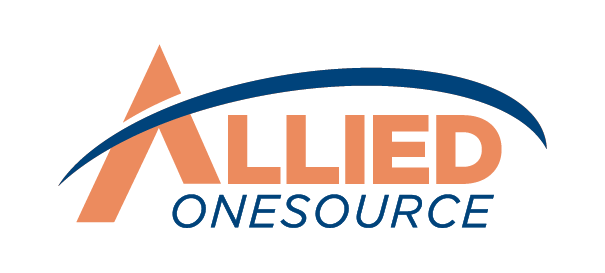Skills-Based Hiring in 2024: What Employers Need to Know About the Changing Landscape of Skills
The traditional emphasis on academic qualifications and degrees is slowly giving way to a more practical and efficient strategy referred to as skills-based hiring. This approach is gaining momentum as employers recognize the importance of selecting candidates based on their skills and capabilities, moving away from relying solely on traditional qualifications or degrees.
In this article, we'll look closer at the state of the skills-based hiring approach and explore how the move towards skills-based hiring is transforming how employers recruit and manage their human resources.
What is Skills-Based Hiring?
is a recruitment strategy where employees are chosen based on their skill set rather than their academic achievements or past job roles. Instead of relying on degrees, employers assess transferable skills and the candidate's ability to develop them on the job.
Human capital is an individual's skills, knowledge, and attributes contributing to economic value. Skills-based hiring prioritizes individual skills, aligning with human capital's focus on knowledge and skills for organizational success.
Recognizing the importance of ongoing skill development, companies implementing this approach have seen substantial improvements.
For instance, McKinsey's research indicates a trend of employers removing college degree requirements, especially in technology and management roles. This shift involves revising job descriptions to focus on essential skills, emphasizing on-the-job learning, and identifying skills that are not crucial.¹
Even major companies like Boeing, Walmart, and IBM are committed to adopting skills-based practices, removing degree requirements from specific job postings, and collaborating with other groups to help workers move from lower-paying to higher-paying positions.
The Transformative Benefits of Skills-Based Hiring
Even in a challenging economy, your business could face difficulties in attracting and retaining highly skilled employees. This underscores the importance of implementing innovative talent strategies. Let's explore why you can use skills-based hiring to navigate the evolving skills landscape.
Higher Caliber of Candidates
Did you know hiring the wrong person might be expensive for your organization? According to Topgrading, the potential cost of a bad hire is estimated to be between five to 27 times the employee's salary.² Yet, in skills-based hiring, the overall quality of candidates improves. It broadens the candidate pool, concentrating on candidates' capabilities, and even finds untapped and nontraditional candidates.
Wider Talent Pool
Increasing the chances of finding great talent happens when you broaden your talent pool by:
- Focusing less on work history and years of experience.
- Encouraging marginalized groups to apply.
- Welcoming candidates who may have gaps in their careers.
- Facilitating career transitions between industries.
- Focusing less on college degrees.
The last point is essential. Many qualified candidates don't have four-year degrees, especially people from underrepresented groups. This can stem from financial barriers, responsibilities outside of school, or other systematic factors that make getting a bachelor's degree challenging. Fortunately, more and more people are slowly adapting their policies.
For instance, the state of Maryland decided not to require four-year college degrees for nearly 50 percent of its positions.³ This significant change enables qualified individuals without degrees to be considered for job opportunities.
Faster Hiring Process
The duration it takes to hire, from a candidate entering your company's candidate pool to receiving a job offer, is a crucial metric for your business. Skills-based hiring can streamline and expedite your hiring process by evaluating candidates early on.
This helps quickly rank candidates based on their skills, saving time and resources and ensuring essential roles are filled promptly, avoiding disruptions to your business operations.
Related Reading: 5 Ways to Speed Up the Hiring Process
Lower Hiring Costs
Recruiting based on skills fills job vacancies faster, cutting down on advertising and marketing costs, which average over $4,000 per role. Also, candidates hired with a skills-based approach often need minimal to no training, saving time and money during onboarding.
Enhanced Employee Retention
Another advantage is its positive impact on employee retention. McKinsey also reports that hiring based on skills is five times more indicative of job performance than hiring based on education and more than two times more predictive than hiring based on work experience.
Additionally, employees without college degrees often remain in their roles 34 percent longer than those with degrees. Skills-based hiring aligns employees' skills with job requirements, leading to a higher probability of job satisfaction and retention.
Greater Workforce Diversity
The cost of college education has increased by 25 percent in the past decade.⁴ As a result, some Americans cannot access career paths demanding a four-year degree due to financial constraints. Skills-based hiring promotes workplace diversity, equity, and inclusion by providing opportunities for people historically excluded from roles based on their education.
This ensures fair consideration for candidates based on their ability to perform the required duties rather than their qualifications.
Related Reading: 5 Tips To Creating and Implementing an Inclusive Work Environment
Best Practices for Skills-Based Hiring
Shifting your hiring methods to match skills-based criteria might seem tricky, but there are ways to assist you in making this change smoothly. Here are some best practices for a more efficient and effective hiring process.
1. Define the skills needed for every vacant position.
Start by identifying the skills needed for the job. Categorize these required skills and those that can be developed while on the job. Don't forget to include soft skills like work ethics and teamwork.
Once you've defined the required and desired skills, think about how these skills can be demonstrated—through certifications or tests, for instance. Skills should be something you can see, measure, and evaluate.
For instance, in a manufacturing role, proficiency in machine operation could be a crucial skill. A candidate might showcase this proficiency through machine operations certification or by completing a relevant skills assessment.
2. Compose job descriptions that emphasize competencies.
Now that you've identified the qualities you seek in a candidate proceed to create your job posting. Explore job description samples on platforms like Indeed to ensure your descriptions explicitly outline both required and preferred skills. Include certifications, licenses, or degrees in the post if they are mandatory.
For a Human Resources/Administrative position, the emphasis might be on organizational skills, proficiency in office software, and effective communication. If specific certifications, such as HR or administrative training, are mandatory, include them in the post. This streamlines the application process, attracting candidates whose competencies align closely with the demands of the position.
3. Use technology to pre-screen and rank candidates based on their skills.
You might be concerned that opening up the job description to more people will bring in too many applications. To manage this, create an application that includes questions related to skills. You can utilize the Applicant Tracking System (ATS) to review resumes and applications, focusing on skills and necessary licenses or certifications.
You can also use artificial intelligence (AI) tools to minimize bias by anonymizing applicant information, focusing on the candidate's skills and abilities, and ensuring equal opportunities for all.
4. Conduct assessments based on skills.
After pre-screening to narrow down your candidates, thoroughly review their skills and qualifications. You're not alone in using this approach; 56 percent of employers utilize pre-employment assessments to evaluate job applicants' knowledge, skills, and abilities.⁵
In a manufacturing context, candidates might undergo hands-on assessments to demonstrate their proficiency in operating specific machinery or troubleshooting technical issues. Doing this step early in the process can save time that might otherwise be spent on unproductive interviews.
5. Create a structured approach for quantifying feedback in your interview process.
Structure your interview feedback process to make it measurable whenever possible and practical. The aim is to hire the best candidate, and feedback should be collected to make the decision clear. Set criteria for feedback and use your ATS to collect it, making it easy for everyone involved to review and agree. Don't let a loose interview process hinder considering nontraditional candidates.
6. Build a sustainable framework.
It is essential to take proactive measures to ensure your employees continually develop and expand their skills to meet your business's evolving needs. Prioritize initiatives such as comprehensive training programs and growth-focused opportunities to ensure your workforce remains adaptable.
Offering training programs, fostering growth, and enhancing the overall employee experience are essential factors in establishing a sustainable work environment.
A Skills Revolution: Stay Ahead of the Competition
The impact of skills-based hiring is on the rise for a reason. Whether your company is just starting to explore this approach or has been considering it for a while, it's clear that a significant change is happening in how a candidate is recruited.
The benefits of skills-based hiring are substantial, but its potential is even greater. Companies can fill entry-level and middle-level positions with individuals who consistently prove their abilities.
These employees are motivated to continually improve their skills, regardless of background or past experiences. The end results? You get employees who know what they are doing and genuinely enjoy their work.
Related Reading: 8 Effective Strategies for Hiring Top Talent and Finding the Perfect Fit
ELEVATE YOUR WORKFORCE AND DIVE INTO SKILLS-BASED HIRING WITH ALLIED ONESOURCE
Are you ready to switch to skills-based hiring and leave traditional resumes behind? Allied OneSource is your partner in navigating this shift! We're here to support your business in excelling amidst the changing skills landscape. Connect with us today, and let's start this transformative journey for your business!
References
1 “Taking a Skills-Based Approach to Building the Future Workforce, McKinsey.” Www.mckinsey.com, www.mckinsey.com/capabilities/people-and-organizational-performance/our-insights/taking-a-skills-based-approach-to-building-the-future-workforce.
2 Topgrading. “The High Costs of Mis-Hires Are Higher than You Think.” Topgrading, 25 June 2019, topgrading.com/resources/blog/the-high-costs-of-mis-hires-are-higher-than-you-think/. Accessed 14 Nov. 2023.
3 Schweitzer, Ally. "Maryland will no longer require four-year degrees for thousands of state jobs." NPR, 16 March 2022, https://www.npr.org/local/305/2022/03/16/1086860660/.
4 Hess, Abigail. “The Cost of College Increased by More than 25% in the Last 10 Years—Here’s Why.” CNBC, CNBC, 13 Dec. 2019, www.cnbc.com/2019/12/13/cost-of-college-increased-by-more-than-25percent-in-the-last-10-years.html.
5“New SHRM Research Makes the Case for Skills-Based Hiring.” SHRM, 15 Aug. 2022, www.shrm.org/about-shrm/press-room/press-releases/pages/new-shrm-research-makes-the-case-for-skills-based-hiring.aspx.










